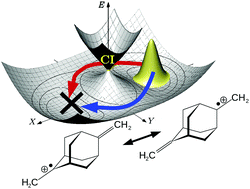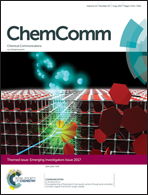Molecular “topological insulators”: a case study of electron transfer in the bis(methylene) adamantyl carbocation†
Abstract
A topological or geometric phase (GP) blockade can be introduced in molecular electron transfer processes if a conical intersection (CI) occurs between two charge configurations. The origin of the blockade is in the destructive interference of two pathways around the CI that acquire opposite GPs. Electron transfer quantum dynamics including and excluding GP have been modelled for the bis(methylene) adamantyl carbocation. These calculations have shown unambiguously that the CI topology and the induced GP are responsible for the transport blockade.

- This article is part of the themed collection: 2017 Emerging Investigators


 Please wait while we load your content...
Please wait while we load your content...